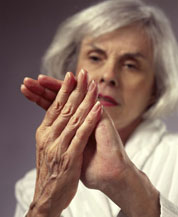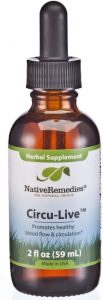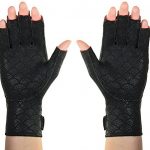A Natural Drug-Free Solution to Help Raynaud’s Disease
Before discussing natural cures for Raynaud’s disease, let’s talk about this disorder, its causes, symptoms, and key considerations among other things. Raynaud’s disease is a disorder of the blood vessels that supply blood to the skin. This condition causes the fingers, toes, and occasionally the ears, nose, tongue, knees, and nipples to feel cold and numb. A typical Raynaud’s attack occurs in stages and may appear as follows:
- The part of the body first affected becomes white as a result of the reduction in blood supply;
- The appearance of a blue tinge occurs as oxygen becomes depleted in the area:
It should be noted that while the above experience is considered typical, not every person with Raynaud’s disease experiences these changes nor do they happen in every attack.
What Causes Raynaud’s Disease?
The origin of Raynaud’s disease remains unknown, which means although, some theories say that an antibody immune response may be involved. This is supported by the fact that patients with Raynaud’s have abnormal immunologic test results.

To learn more about Raynaud’s, it is useful to first gain an understanding of the way that the body conserves heat and what happens when it is faced with a change in temperature……
To keep itself warm, your body reduces blood circulation to the fingers and toes. How does it do this? It achieves this by narrowing the small arteries under the skin of the extremities. This is a normal response but people suffering from Raynaud’s disease become extremely sensitive to cold and the arteries that go to their fingers and toes go into “vasospasm”.
Because exposure to cold temperatures can have a dramatic impact on sufferers simple things like washing hands with cold water, taking something out of the freezer, or coming in contact with a cold wind may trigger an attack. In some people, a stressful event is enough to provoke a Raynaud’s attack.
Diagnosing Raynaud’s Disease and Types of Raynaud’s Disease.
Primary Raynaud’s Disease
This happens when there is no other underlying condition associated with the disorder and most commonly affects the hands and feet.
Raynaud’s Phenomenon
This is also known as Secondary Raynaud’s and is a condition often associated with autoimmune diseases or connective tissue disorders such as scleroderma, systemic lupus, polymyositis, Sjogren’s syndrome, rheumatoid arthritis, and carpal tunnel syndrome.
Signs and Symptoms of Raynaud’s Disease.

Raynaud’s Phenomenon could damage your skin and the soft connective tissues in the affected area. Additionally, ulcers and blisters may develop, become infected, and take some time to heal. Severe cases can lead to gangrene and the loss of a finger.
Raynaud’s attacks may affect one or two fingers or toes and the affected digits can be different every time. Even though Raynaud’s Phenomenon is not a life-threatening disease, severe cases cause disability and attacks may grow more severe.
Raynaud’s Disease Treatment.
The main goal of Raynaud’s Disease Prognosis is to prevent or reduce the number and severity of the attacks; the secondary goal is to prevent tissue damage.
With respect to medication, there are some drugs the doctor may prescribe to dilate blood vessels and improve circulation, however, these drugs are not specific to Raynaud’s disease and many of them have side effects.
Useful Considerations if you have Raynaud’s…
- “Dry body brushing” may help increase circulation. Once a day, starting at the feet, rub the body with a washcloth in a circular motion up towards the heart; all body parts above the heart are rubbed downwards.
- If you live in a place with seasons, wear a scarf, gloves or mittens, and a good pair of socks and boots at all times during the colder months. A hat is also very important since the body loses a lot of heat through the head. Wear layered clothing and a warm coat with long cuffs.
- During the warmer months, it is good to have a sweater handy as air conditioning can trigger an attack. If you are indoors, wear socks and lower the air conditioning at home; never walk around barefoot.
- Avoid taking cold beverages with your hands, washing vegetables with cold water, and taking food from the freezer without gloves
- Don’t smoke and avoid second-hand smoke as nicotine causes the skin temperature to drop
- Exercise frequently to improve circulation
- Learn relaxation techniques to reduce stress levels
- Keep away from using anything that vibrates as vibration may trigger an attack
- Do not engage in activities that put pressure on the fingertips (eg playing piano or guitar)
- Take care of your hands and feet as skin may become very dry from reduced circulation. Hydrate your skin with a lotion containing lanolin and use a soft and creamy soap. Keep your cuticles soft and hydrated.
What to do During a Raynaud’s Disease Attack.
* Wiggle your fingers and toes. *Move to a warmer area. *Massage hands and feet. *Put your hands under the armpit or run warm water over the affected area. *If the attack is triggered by stress learn relaxation techniques.
Raynaud’s Disease Natural Cures
Many sufferers have experienced natural cures for Raynaud’s disease.
They include:
Ginkgo biloba is a well-known herb that has been used in traditional Chinese medicine with much success. Clinical studies show that it helps restore the health of the circulatory system while enhancing blood flow to the extremities. The positive effects of Ginkgo biloba on circulation can help people with Raynaud’s disease by preventing tissue damage and improving circulation.
Rosemary is a well-known culinary herb considered a muscle and circulatory rejuvenator. It also helps protect the brain from oxidation, increases blood flow, reduces inflammation, and has potent antioxidant properties that slow the actions of free radicals and defending the body against cancer.
Ginger, also known as zingiber officinale is native to India and China. Ginger is often recommended by Chinese herbalists to treat conditions that involve problems with cold temperatures, such as Raynaud’s disease.
Ginger root is an excellent digestive aid with anti-inflammatory properties that effectively stimulates blood circulation, and helps to cleanse and detoxify the body.
Our Featured Herbal Formula To Ease Raynaud’s Disease:

- Supports healthy circulation
- Supports heart, blood vessels, and circulation
- Supports blood flow to the extremities, your hands, and feet
The body is a network of veins, arteries, and capillaries – all interconnected, and all trying to complete the vital task of carrying blood to every part of our bodies. Good blood circulation means getting oxygen-rich blood to even the farthest tips of our bodies, from fingers to toes.
Normal circulation of blood carries nutrients (food) and oxygen. Blood also carries away waste products so that they can be removed from the body.
In order to support systemic health, it is therefore vital to maintain adequate circulatory functioning.
If your life is being affected by Raynaud’s disease, and your hands and fingers easily get cold numb, and even tender, learn more about Circu-Live here and find out how you can improve your health and well-being naturally.
More on health and Raynaud’s disease on our health conditions page



